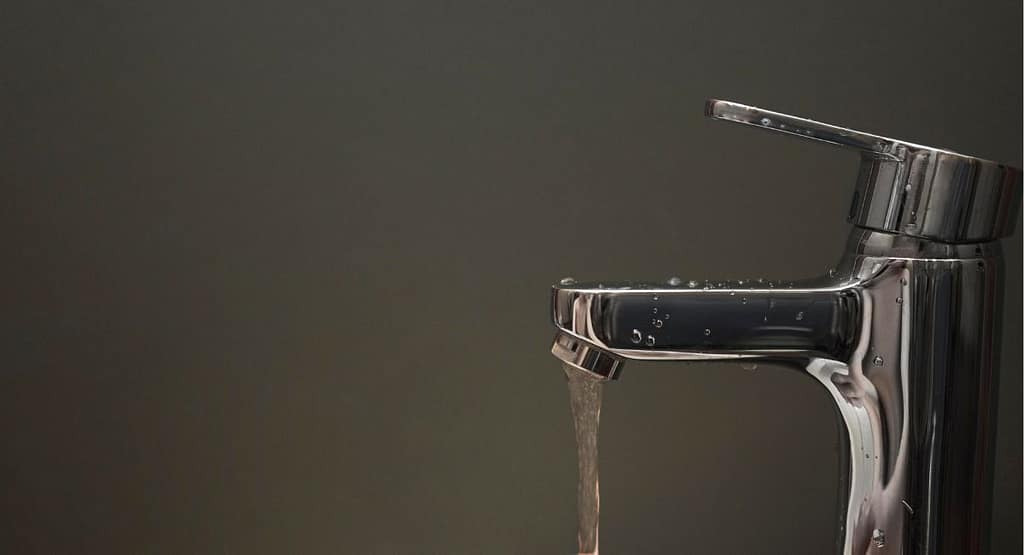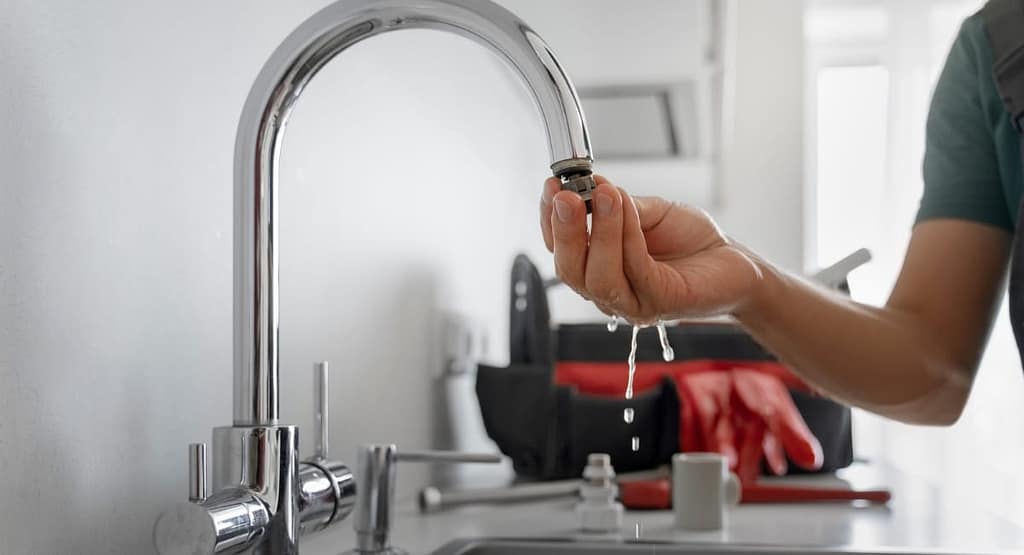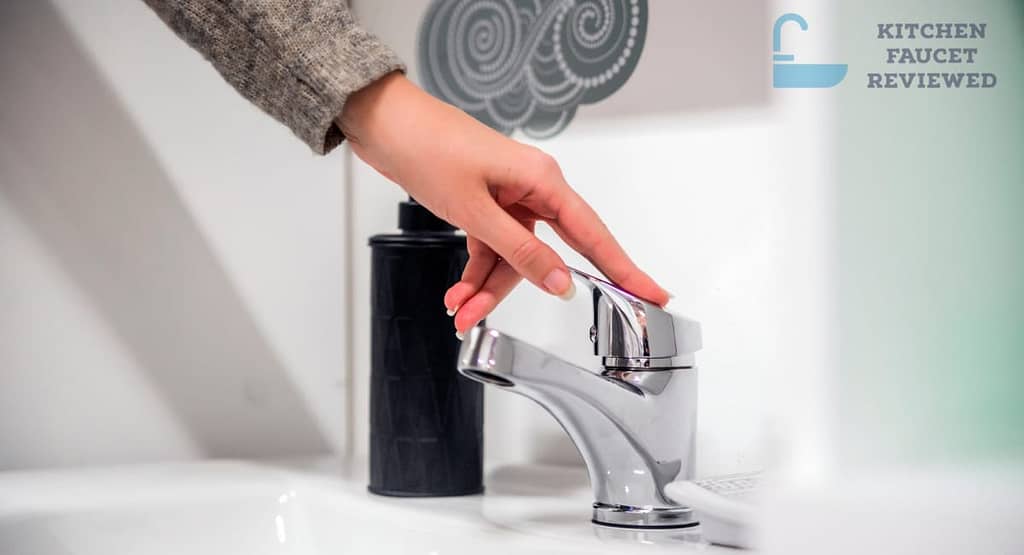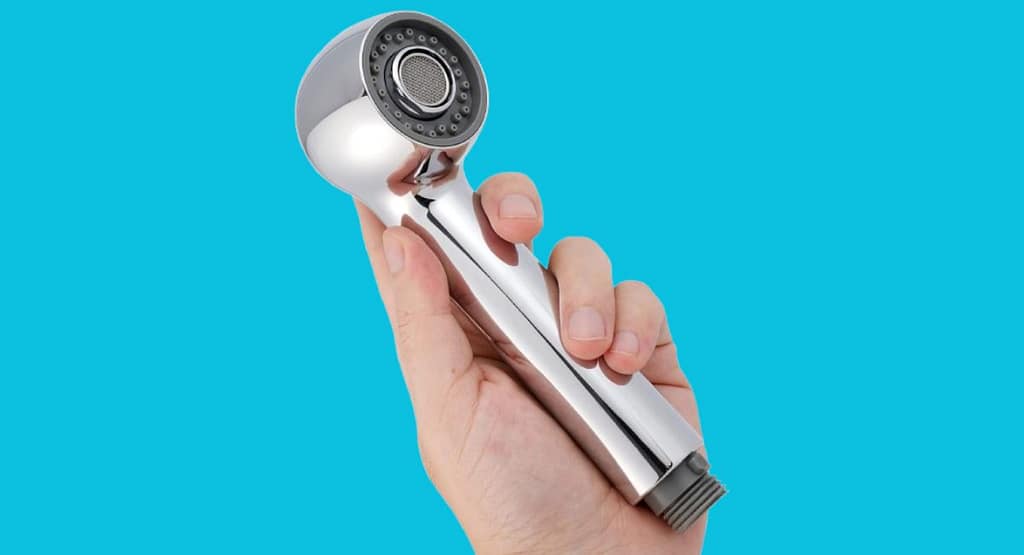How to remove limescale from My faucets:
Limescale, mineral deposits, scale, or whatever it is called in your home. Regardless of what it’s called, this buildup is a nuisance in homes with hard water. As the water evaporates, it leaves a white, crusty mineral deposit around the base of the faucet and drains away.
This limescale looks very ugly on the faucet and decreases the beauty of the faucet. Also, this can affect the water pressure if you don’t clean it.
Sometimes it becomes very important to remove because it covers the faucet’s hole and blocks the water.
Luckily, removing unsightly debris is an easy process. We’re here to help because we have some informative tips that will help you clean the bathroom or kitchen tap. So, keep reading on to find out more!
What Are the Reasons for Mineral Buildup on a Faucet?

The limescale you see on your faucet is most likely the result of hard water evaporating from its surface. Most homes that work with well or stream water will take care of hard water problems, although this can easily be remedied with a water softener.
Buildup often occurs around the base of the faucet where it meets the counter or sink deck. However, you may also see debris around the spout (often at the aerator) or near the base of the handle.
These deposits form when you allow water to evaporate on these surfaces. So, if you turn off the faucet with water on your hands, some of the water from your hands may run into the faucet or pool near the floor. As the liquid evaporates, it leaves behind its mineral content. That means we shouldn’t turn off the faucet with wet hands. If we do this, then clean the tap after some days.
How to remove hard lime from my kitchen or bathroom faucet?
Removing hard limescale deposits from your faucet or sink drain is a fairly simple task. It’s usually as simple as applying something to dissolve the buildup and waiting for it to go away. In some cases, you may have to make some effort to remove the deposits, but this depends on the severity.
Here are some methods to remove that pesky mineral buildup from your faucet:
Vinegar
Vinegar contains acetic acid and is the ideal solution to dissolve pesky mineral deposits. Many people have white vinegar on hand for cleaning in their homes, so this might be the best option. Vinegar is very effective and works quickly.
Any type of vinegar will work, but most people have 3 percent white vinegar, the strongest you can buy (barring 10 or 20 percent vinegar to kill weeds). A 3 percent mix will work well. Here’s what you need:
- White Vinegar
- Old Toothbrush
- Sandwich Bag
- Rubber Band
- Paper towel
- Cloth
Start by soaking an old toothbrush in white vinegar. Apply liberally to problem areas, making sure to cover all buildup. The toothbrush helps to get into tight spaces like between handles or at the foot of the tap.
Soak a paper towel in vinegar, then wrap it around the problem area. This prevents evaporation and allows the vinegar to do its job.
If the faucet’s aerator is clogged, you can remove it and soak it in vinegar while you wait for the faucet to clear. Or, if you can’t remove the aerator, simply pour a few tablespoons of white vinegar into a sandwich bag and secure it around the faucet spout, making sure the aerator and spout are submerged.
Let the vinegar sit for about an hour before scrubbing away the buildup with a toothbrush. If you soak the aerator, it is best to leave it overnight (if possible).
Once you have removed the buildup, wipe the faucet with a clean, damp cloth to remove any residue. Wipe the faucet with a dry cloth to remove moisture.
Milk
Surprisingly, milk can also remove limescale. Although milk contains lactic acid, which dissolves deposits, the concentration is low. This means that the process will take a long time. longer than using vinegar or other options on this list.
If you’re using milk, just follow the exact same instructions as you do with the vinegar. You’ll need to let it dip in the milk for a long time as the lactic acid isn’t as concentrated, but it should work.
Citrus Juice
Citrus fruits, including lemons and limes, work wonders for mineral levels. The juice of these fruits contains citric acid, which quickly dissolves limescale.
So if you have a few lemons at home, slice them up and squeeze the juice into the limescale deposits. Or use bottled lemon juice in the same way we mentioned vinegar above.
Citric acid dissolves the mineral concentration reasonably quickly, so you’ll not have to leave it for long. Follow the directions in the vinegar section.
Besides that, you can also use tomato or orange juice, but these may take much longer to dissolve limescale.
Fizzy Drinks
Fizzy soft drinks contain phosphoric acid, which is able to dissolve calcium deposits (and nails, but that’s another story). Cola drinks will suffice as they contain enough phosphoric acid to help remove scale. Of course, the sugar content in the drink makes the solution pretty sticky, so you’ll have to clean up a bit after you’re done.
Remember, after cleaning the faucet to remove any sticky residue, dry it well. If you let hard water dry on the faucet, it will evaporate and leave a residue that will bring you back to square one.
Commercial Products
If you like prefer commercial products, you can use the products that are designed to dissolve scale (aka scale or mineral deposits). However, these products are widely available and you can easily find them in the cleaning section of your local hardware or grocery store.
CLR is also a good option for you as it contains lactic acid as one of its main components. However, you can choose the product that best suits your needs. Just make sure it’s designed for use on limescale buildup.
How Can I prevent limescale build-up on Faucets?
If you’re using hard water in your home, you have to deal with limescale build-up on a regular basis. There are a few ways to prevent deposits from forming in the first place, although some are easier than others.
For example, you could install a water softener. These systems can remove minerals from the water, including calcium, magnesium, and other minerals. The resin droplets in the fabric softener capture these minerals and exchange them for sodium or potassium through ion exchange technology.
But, a water softener might be an expensive solution for you to a simple problem. Therefore, it may not be the best option for every household. If you don’t want to buy a water softener, try to keep your faucets clean with our first method.
It doesn’t need to be thoroughly cleaned every day; just remember to clean the faucet after each use.
Limescale is formed when water is left on the faucet or sink cover until it has evaporated. Keeping the faucet dry will eliminate the problem. This can be difficult, especially if you have children, but it’s a surefire way to avoid the problem.
Final Verdict
And just like that, your fixtures are fresh once more – limescale is a thing of the past! I hope these simple solutions have you feeling like your faucet’s best friend again. Preventing buildup in the future is easy, too, with a little maintenance minute added to your daily routine.
Who knew it could be so straightforward to return flow to full force? Your sparkling spigots are proof positive that DIY descaling is a total breeze. Feel free to pay the wisdom forward – share these tricks with other homeowners stuck in scaling scrapes. Together, we’ll spread the word that Limelight Limestone still needs to get something on us.
Now go forth and freely fill those cups, my newly faucet-savvy friend. May your taps only trickle tidings of clean-flowing days to come. ‘Til next time – keep It simple, find your zen, and don’t forget to dry! Lime conquering is its own reward.
FAQs
Q: Can’t I blast it with boiling water?
A: While boiling H2O can help loosen scale, it may not fully remove stubborn buildup or prevent future deposits. Gentler remedies require less effort and provide more thorough, lasting success.
Q: What if I don’t have white vinegar/lemons?
A: Fear not! Citrus juices aren’t the only natural magic makers. Tomato juice, soda water, warm tea, and coffee – all contain mild acids that’ll do the trick given time. Resourceful remedies require rapport, not rigid rules.
Q: Will the scale come back?
A: Only if you dry the faucet partially each time. But with mindful maintenance, your taps can stay deposit-free! Try drying with a squeegee for no-dust disposal of droplets – no residue means no regrowth potential.
Q: My scale is super stuck, any tips?
A: Scale-stuck plumbing needs patience and positivity. Reapply the solution frequently and give it time to penetrate petrified plasters fully. A plastic-wrapped toothbrush massage also encourages release. Scaling down happens gradually through caring, continuous contact.
Q: Can I use commercial cleaners instead?
A: Absolutely! Ensure ingredients are designed to dissolve mineral deposits safely and read directions closely. A little homemade remedy or DIY TLC never hurt as preventative measures between tough clean-ups.





